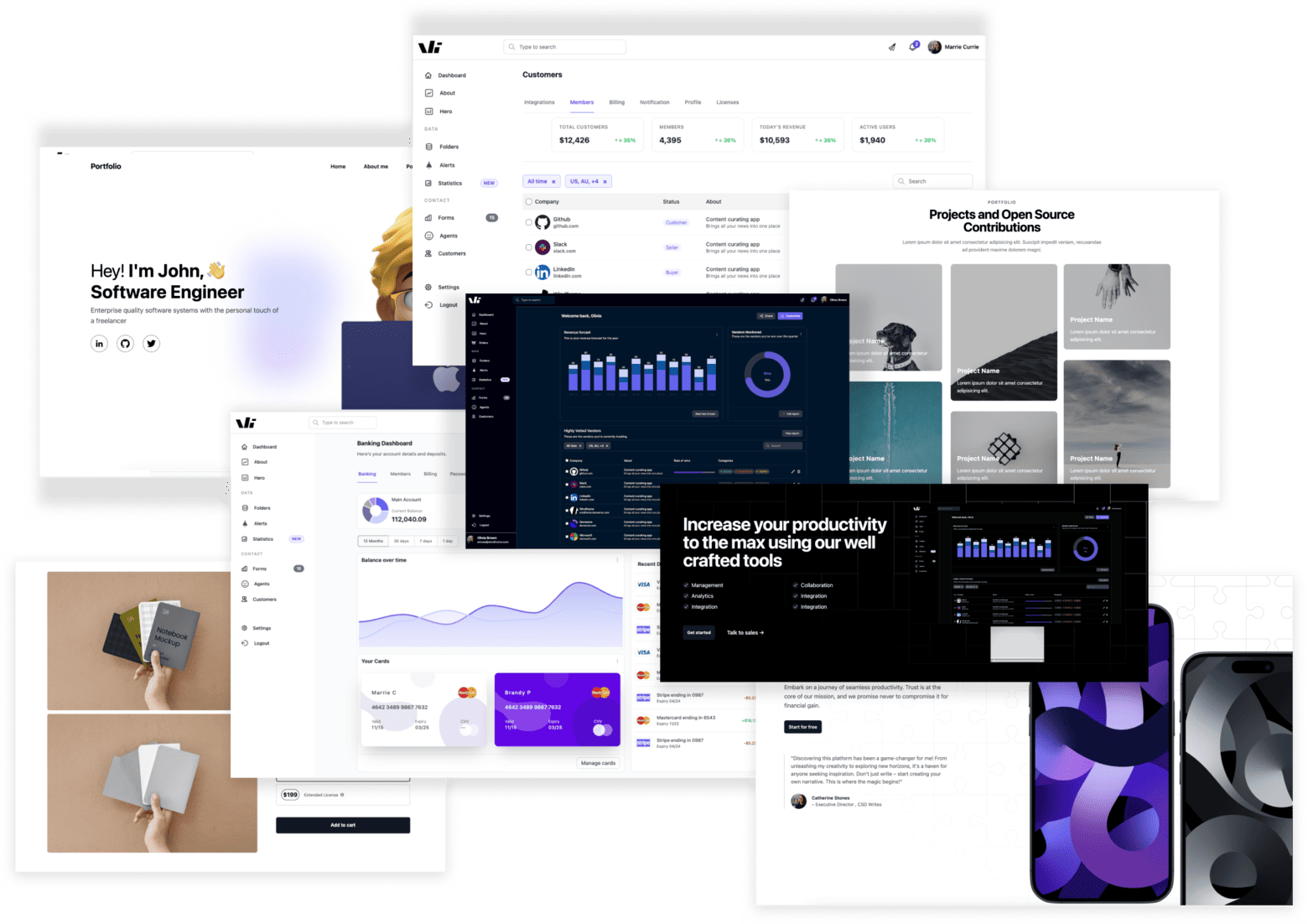Tailwind CSS Flex Direction
The tailwind flex direction utility class allows you to control the direction in which flex items are laid out within a flex container
Tailwind Flex direction
The tailwind flex direction utility class allows you to control the direction in which flex items are laid out within a flex container. It provides a set of classes that enable you to easily specify the flex direction, allowing you to create flexible and responsive layouts.
How to Set Tailwind Flex Direction
To set the tailwind flex direction of a flex container, you can use the flex class in combination with one of the following classes:
-
flex-row: This sets the flex direction to horizontal, with flex items laid out in a row from left to right. -
flex-row-reverse: This sets the flex direction to horizontal, but in reverse order, with flex items laid out in a row from right to left. -
flex-col: This sets the flex direction to vertical, with flex items laid out in a column from top to bottom. -
flex-col-reverse: This sets the flex direction to vertical, but in reverse order, with flex items laid out in a column from bottom to top.
Tailwind Flex Row
Tailwind flex row class is used to set the flex direction to horizontal, with flex items laid out in a row from left to right.
<div class="flex flex-row"> <div class="flex-1">A</div> <div class="flex-1">B</div> <div class="flex-1">C</div></div>Preview
A
B
C
Tailwind Flex-Row-Reverse
Tailwind flex row reverse class is used to set the flex direction to horizontal, but in reverse order, with flex items laid out in a row from right to left.
<div class="flex flex-row-reverse"> <div class="flex-1">A</div> <div class="flex-1">B</div> <div class="flex-1">C</div></div>Preview
flex-row
flex-row
flex-row
Tailwind Flex-Col
Tailwind flex col class is used to set the flex direction to vertical, with flex items laid out in a column from top to bottom
<div class="flex flex-col"> <div class="flex-1">A</div> <div class="flex-1">B</div> <div class="flex-1">C</div></div>Preview
A
B
C
Tailwind Flex-Col-Reverse
Tailwind flex col reverse class is used to set the flex direction to vertical, but in reverse order, with flex items laid out in a column from bottom to top
<div class="flex flex-col-reverse"> <div class="flex-1">A</div> <div class="flex-1">B</div> <div class="flex-1">C</div></div>Preview
A
B
C
That's it! You now have a good understanding of how to use the flex direction utility classes in Tailwind CSS to control the direction in which flex items are laid out within a flex container.
Responsive Behavior
All flex-related utilities support responsive variants:
<div class="flex flex-col sm:flex-row md:justify-between"> <div>Item A</div> <div>Item B</div></div>Preview
Start vertical (flex-col), then switch to horizontal layout (flex-row) on small screens and space items on medium screens.
Interaction State Usage
Flex direction can change on hover or focus:
<div class="flex flex-col hover:flex-row gap-4 cursor-pointer"> <div class="bg-indigo-500 text-white p-4">Hover Me</div> <div class="bg-indigo-300 text-white p-4">I move</div></div>Preview
Useful for interactive layouts or gallery previews.
Arbitrary Value Usage
You can apply any valid CSS flex-direction value using square brackets:
<div class="flex [flex-direction:column-reverse] gap-2"> <div class="bg-gray-700 text-white p-4">Last</div> <div class="bg-gray-500 text-white p-4">First</div></div>Preview
While this isn’t common, it’s useful if you need a custom direction value for experimental layouts.
Customization in tailwind.config.js
If you want custom aliases for directions:
module.exports = { theme: { extend: { flexDirection: { 'up-to-down': 'row', 'col-reverse-custom': 'column-reverse', }, }, },};Then use:
<div class="flex-up-to-down">...</div>Preview
Real UI Component Examples
🔹 Responsive Navbar
<nav class="flex items-center justify-between px-4 py-3"> <span class="font-bold text-lg">Logo</span> <ul class="hidden md:flex gap-6"> <li><a href="#">Home</a></li> <li><a href="#">Features</a></li> <li><a href="#">Pricing</a></li> </ul></nav>Preview
🔹 Card Layout
<div class="flex flex-col md:flex-row gap-6"> <img src="image.jpg" class="w-full md:w-1/3 object-cover" /> <div class="flex-1"> <h2 class="text-xl font-semibold mb-2">Card Title</h2> <p class="text-gray-600">Description text...</p> </div></div>Preview

Tassa Matins
Developer
✅ Best Practices for Devs & Designers
-
Use flex for layout structures that need alignment, equal spacing, or flexible widths.
-
Prefer flex over grid when you need row/column layout with simple item alignment.
-
Use
flex-1for auto-sizing children within dynamic containers. -
Combine
flex,gap-*, anditems-centerfor clean UI alignment without manual margin hacks. -
Use
basis-*+grow+shrinkto fully control item sizing behavior.
♿ Accessibility Notes
-
Flexbox doesn't directly affect accessibility, but improper order or alignment can impact screen reader flow.
-
Be mindful of visual order vs. DOM order — flex-row-reverse may confuse screen readers.
-
Use semantic HTML (
<nav>,<main>,<section>) alongside flex layouts for proper structure.
Tailwind Flex Direction Class Table
| Class | Properties |
|---|---|
| flex-row | flex-direction: row; |
| flex-row-reverse | flex-direction: row-reverse; |
| flex-col | flex-direction: column; |
| flex-col-reverse | flex-direction: column-reverse; |
✨ What's Next?
Check out this Tailwind classes
Windframe Tailwind blocks
Windframe is an AI visual editor for rapidly building stunning web UIs & websites
Start building stunning web UIs & websites!

